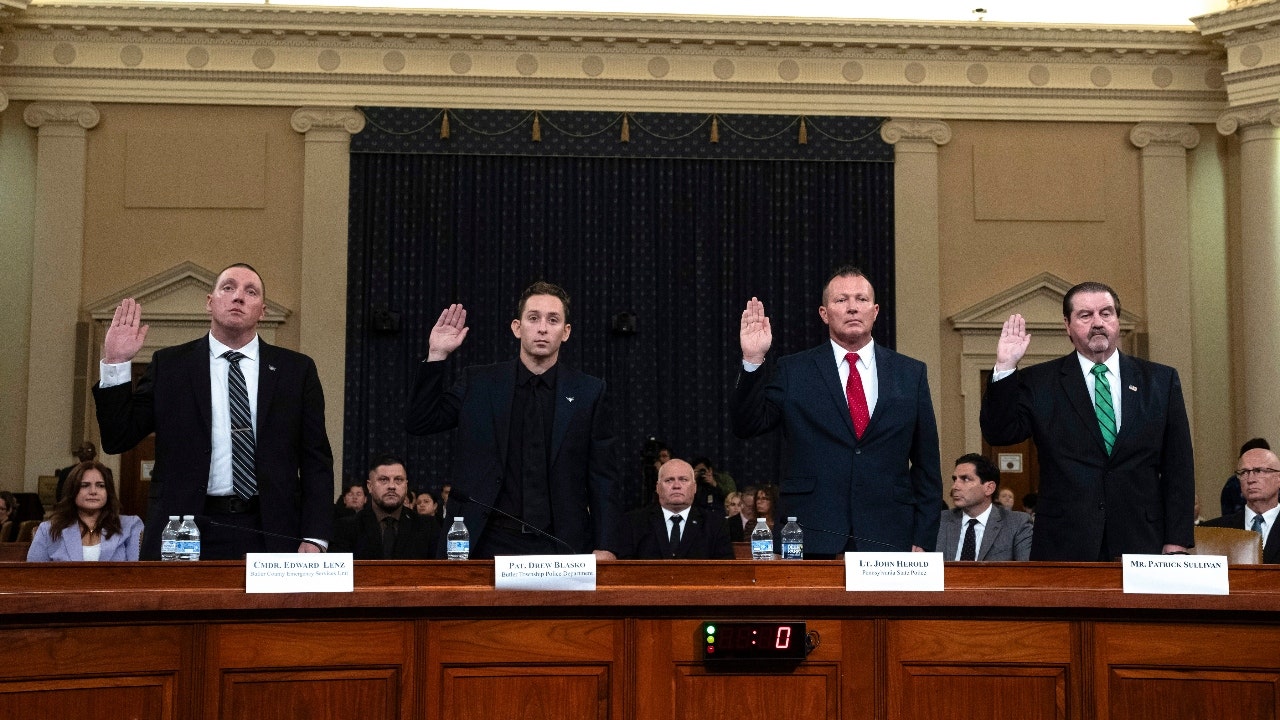Tensions Emerge in House Task Force Investigating Trump Assassination Attempt
In a striking turn of events, Democratic lawmakers on the House task force investigating the attempted assassination of former President Donald Trump opted to skip the latter part of the panel’s first hearing on Thursday. This segment featured testimony from two Republican representatives, Eli Crane of Arizona and Cory Mills of Florida, who have been conducting their own parallel investigation into the shooting incident that occurred during a rally in Butler, Pennsylvania.
The absence of Democratic members during this critical portion of the hearing has raised eyebrows and sparked frustration among their ranks. Sources indicate that some Democratic lawmakers were not informed of the Republicans’ testimony until late Wednesday afternoon, with others receiving the news only on Thursday morning. This lack of communication has been perceived as a significant breach of protocol, marking the first notable bipartisan split in what had been a unified effort to investigate the assassination attempt.
The Hearing’s Structure and Content
The hearing was divided into two parts. The first segment featured testimony from a former Secret Service agent and local law enforcement officials who were present at the rally where the assassination attempt occurred. During this rally, Trump was shot in the ear, and a firefighter, Corey Comperatore, tragically lost his life. The second portion, which Democrats chose to skip, included Crane and Mills, both military veterans, who provided insights based on their own investigations.
Rep. Jason Crow, the ranking Democrat on the panel, expressed his frustration regarding the late notice of the second panel’s witnesses. He emphasized that the Democrats were not targeting Mills and Crane but were concerned about the lack of transparency from their own leadership. "We did not receive notice of the second panel until late yesterday," Crow stated, highlighting the confusion surrounding the testimony.
Bipartisan Efforts and Challenges
Despite the tensions, Task Force Chairman Mike Kelly, a Republican from Pennsylvania, attempted to downplay the significance of the Democrats’ absence. He noted that he invited Mills and Crane to testify due to their expertise and welcomed their assessments regarding the security perimeter at the rally. Kelly reassured reporters that the task force’s bipartisan mission would remain intact, regardless of the recent developments.
He remarked, "If you want to participate, you can participate. If you decide not to, you can make that decision too." This statement reflects a growing sentiment among some Republicans that the Democrats’ decision to skip the hearing was a choice rather than a necessity.
Security Failures Under Scrutiny
The investigation has revealed alarming security failures that allowed the gunman, Thomas Matthew Crooks, to open fire from a rooftop just outside the designated security perimeter. Witnesses and lawmakers have pointed to a lack of clear communication regarding security plans from the Secret Service as a critical factor in the incident. Kelly noted that multiple failures contributed to Crooks’s ability to evade one of the nation’s most elite security teams.
Crow echoed this sentiment, asserting that the Secret Service bore ultimate responsibility for the protection of the event. He criticized the agency for failing to provide clear guidance to local law enforcement, stating, "They did not do their job. They did not provide the clarity and the guidance to local law enforcement."
The Aftermath of the Shooting
The aftermath of the shooting has raised numerous questions about the adequacy of security measures in place during the rally. One of the most pressing inquiries is why law enforcement personnel were not stationed on the roof of the AGR building, which offered a clear line of sight to Trump. Rep. Pat Fallon from Texas emphasized the obvious threat posed by the building, suggesting that even a child could have identified it as a potential danger.
The task force, comprised of seven Republicans and six Democrats, has spent the past two months analyzing the security failures surrounding the rally. They have conducted nearly two dozen interviews with law enforcement officials and reviewed over 2,800 pages of documents from the Secret Service. An interim report from the Senate Homeland Security and Governmental Affairs Committee corroborated these findings, indicating that the Secret Service failed to provide clear instructions to local officials regarding the security of the building from which the gunman fired.
Future Implications
As the investigation continues, lawmakers are keen to hear from Acting Secret Service Director Ronald Rowe again, especially following Congress’s recent allocation of $230 million in additional funding for the agency. The scrutiny of the Secret Service’s actions and the overall security protocols in place during high-profile events is likely to remain a focal point of discussion as the task force moves forward.
The dynamics within the task force and the broader implications of the investigation underscore the complexities of bipartisan cooperation in the face of a serious national security incident. As the inquiry unfolds, the interplay between party lines and the quest for accountability will be closely watched by both lawmakers and the public alike.
